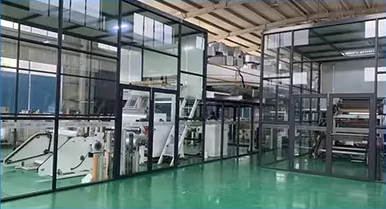The Importance of Floor Safety Strips
In a world where safety is paramount, floor safety strips have emerged as an essential feature in both residential and commercial spaces. These strips, often made of durable materials such as rubber or vinyl, are designed to enhance visibility and traction, thereby reducing the risk of slips and falls. As we delve into the importance of floor safety strips, we will explore their various benefits, applications, and the reasons why they should be integrated into every building.
Slip Prevention
One of the primary benefits of floor safety strips is their ability to prevent slips and falls. According to the National Safety Council, falls account for a significant number of unintentional injuries and fatalities each year, particularly in workplaces. Safety strips, typically applied to stairs, ramps, and other high-traffic areas, provide much-needed grip to surfaces that might otherwise be hazardous, especially in wet or oily conditions. By increasing traction, these strips significantly reduce the likelihood of accidents, ensuring a safer environment for everyone.
Enhanced Visibility
In addition to improving traction, floor safety strips play a crucial role in enhancing visibility. Many safety strips come in bright colors or feature reflective materials that stand out against flooring surfaces. This visual distinction acts as a warning to individuals, alerting them to potential hazards, such as a step down or an uneven surface. Such visibility is particularly important in poorly lit areas, where the risk of accidents is heightened. By using safety strips, property owners can ensure that people are constantly aware of their surroundings, further minimizing the chances of slips and falls.
Versatility Across Environments
floor safety strips

Floor safety strips are not just limited to one type of setting; they are versatile and can be utilized in a variety of environments. In commercial spaces like shopping malls, airports, and restaurants, safety strips can be strategically placed to guide foot traffic and reduce the tendency of customers to rush in potentially dangerous areas. In residential settings, they can be applied to staircases and bathrooms, where the risk of slipping is particularly high. Even in outdoor spaces, safety strips can be used on walkways and ramps to improve safety and accessibility. Their adaptability ensures that they are an effective solution for a wide range of applications.
Cost-Effectiveness
Another compelling reason to invest in floor safety strips is their cost-effectiveness. Implementing safety measures such as installing safety strips is significantly less expensive than dealing with the consequences of accidents, including medical costs, lost productivity, and potential legal actions. By proactively addressing slip and fall hazards, businesses and homeowners can save money in the long run while creating a safer environment for occupants. Moreover, the installation process is relatively simple and quick, allowing for minimal disruption to daily activities.
Compliance with Regulations
In many regions, safety regulations mandate the use of floor safety measures in certain buildings, particularly those that are open to the public. By installing safety strips, property owners can ensure compliance with local laws while also demonstrating a commitment to the well-being of their customers and employees. This proactive approach not only protects individuals but can also enhance the reputation of a business, showcasing a dedication to safety and care.
Conclusion
In conclusion, floor safety strips are a vital component of any safety strategy, offering benefits ranging from slip prevention and enhanced visibility to versatility and cost-effectiveness. As we strive to create safer environments for everyone, the integration of floor safety strips in both residential and commercial spaces must be a priority. By doing so, we can significantly reduce the occurrence of accidents and foster a culture of safety that ultimately protects lives.
-
XIANGFAN Rubber Tape-Ultimate Solutions for All Your Insulation NeedsNewsJun.24,2025
-
XIANGFAN Rubber Tape-Protection for Industrial and Residential ApplicationsNewsJun.24,2025
-
XIANGFAN Rubber Tape: Superior Safety and Sealing for Demanding EnvironmentsNewsJun.24,2025
-
XIANGFAN Rubber Tape: Reliable Solutions for Every Electrical ChallengeNewsJun.24,2025
-
XIANGFAN Electrical & Industrial Tape: Powering Reliability Across IndustriesNewsJun.24,2025
-
XIANGFAN Electrical & Industrial Tape: Excellence in Every ApplicationNewsJun.24,2025
